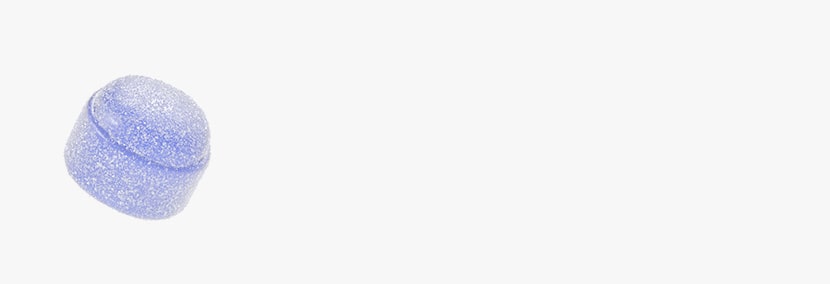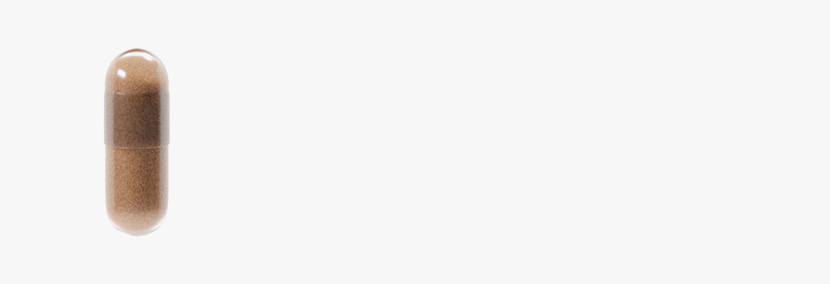Botulax
Botulax Reconstitution Instructions for Practitioners
Jul 23, 2025
Injectable treatments, especially those containing botulinum toxins, are often provided as lyophilized powders. This method helps maintain their potency and extend shelf life. A study highlighted the importance of reconstituting these powders with a sterile diluent to ensure proper dosing and preserve the integrity of the product, particularly for sensitive formulations like Botulax.
Botulax, a botulinum toxin type A developed by HUGEL Inc., must be carefully reconstituted before injection. To ensure purity, consistency, and therapeutic efficacy, it’s crucial to use preservative-free saline. The technique, dilution, and timing of the reconstitution process are all critical to achieving optimal clinical results.
In this article, we’ll walk through the Botulax reconstitution steps, share handling tips, and provide best practices to ensure safe, effective use in both aesthetic and therapeutic treatments.
Key Takeaways
- Botulax, manufactured by Hugel Inc., is available in 100U and 200U vials and can be reconstituted to achieve varying treatment effects based on dilution ratios.
- Proper dilution is essential for precision and consistency, with higher concentrations used for thicker muscles like the masseter and lighter concentrations for delicate areas like the crow’s feet or forehead.
- Preservative-free saline is the recommended diluent to preserve the neurotoxin’s purity, with bacteriostatic saline and other solutions potentially compromising its effectiveness.
- Reconstituted Botulax should ideally be used within 4 hours of preparation for maximum potency, though it can be stored for up to 24 hours in the refrigerator, provided it is kept away from light and at the correct temperature.
- Proper reconstitution techniques are crucial: avoid shaking or creating foam, and gently rotate the vial to dissolve the solution. Accurate labeling is necessary to track dilution details, reconstitution time, and practitioner initials.
- Practitioners should always maintain aseptic technique during reconstitution to prevent contamination and ensure consistent patient outcomes.
- Following these reconstitution best practices ensures optimal therapeutic performance, reduces waste, and enhances patient satisfaction during Botulax therapy.
About: Trusted by over 2,000+ global clients since 2014, Maylips has become a leading supplier of cosmetic, skincare, and orthopedic products for medical and aesthetic professionals. Maylips offers a wide range of authentic brand-name products at competitive wholesale prices, sourced from around the world. If you’re looking to buy Botulax online, contact our sales team for guidance.
Botulax Dilution Ratios & Charts for 100–300 U
Botulax, a botulinum toxin product manufactured by Hugel Inc. (the Botulax manufacturer), is available in 100U and 200U vials and can be reconstituted to achieve varying treatment effects. The dilution ratio is a critical factor, as it determines how much product is injected per unit area and directly impacts diffusion, precision, and overall treatment outcome.


Choosing the right dilution is essential for consistent results and to minimize the risk of overcorrection or adverse effects. Here is a general dilution chart for Botulax reconstitution:
For 100U Botulax Vial:
| Diluent Volume (mL) | Units per 0.1 mL | Concentration |
| 1.0 mL | 10 U | High |
| 2.0 mL | 5 U | Medium |
| 2.5 mL | 4 U | Medium-Light |
| 4.0 mL | 2.5 U | Light |
For 200U Botulax Vial:
| Diluent Volume (mL) | Units per 0.1 mL | Concentration |
| 2.0 mL | 10 U | High |
| 4.0 mL | 5 U | Medium |
| 8.0 mL | 2.5 U | Light |
When selecting your dilution, consider the treatment site and the desired effect. Thicker muscles, like the masseter, often require more concentrated doses, while delicate areas such as the crow’s feet or forehead benefit from lighter concentrations for a more natural appearance.
Botulax Reconstitution Best Practices (No Foam, Proper Label)
Proper reconstitution of Botulax is essential to ensure both safety and effectiveness. The method used directly impacts the stability and usability of the neurotoxin. Improper reconstitution, such as shaking or creating foam, can denature the active protein, reducing the product’s potency.
Best Practices for Reconstitution


- Always use preservative-free 0.9% saline. Substituting with bacteriostatic saline or other solutions can compromise the integrity of the product.
- Insert the needle gently along the inner wall of the vial, allowing the saline to trickle down and avoid creating bubbles or foam.
- Do not shake the vial. Instead, gently rotate or swirl the vial until the solution is fully dissolved and clear.
- Label the vial immediately after reconstitution. Include essential details such as dilution amount, total units, reconstitution date/time, and the practitioner’s initials.
- Before use, inspect the vial for any particles or discoloration. If any issues are observed, discard the vial.
Aseptic technique is crucial at every step to prevent contamination and ensure the best possible patient outcomes.
Botulax Formulation Considerations & Diluent Guidance
Understanding Botulax’s formulation is key to optimizing its preparation. Each vial contains Clostridium botulinum toxin type A, human serum albumin, and sodium chloride. The Botulax manufacturer specifies that reconstitution should only use 0.9% sodium chloride to maintain the purity and clinical efficacy of the neurotoxin.
Why Preservative-Free Saline?
Reconstituting Botulax with preservative-free saline ensures that the neurotoxin remains at full potency and does not risk compromising patient tolerance. Unlike bacteriostatic saline, which contains benzyl alcohol and can decrease the potency of the toxin, preservative-free saline ensures that patient comfort is maintained, and the product performs optimally. This choice is crucial to maintaining consistent high-quality results, in line with the Botulax manufacturer’s standards.
Key Tips
- Always use sterile, single-use saline vials to maintain purity and prevent microbial contamination.
- Do not substitute saline with lidocaine or other anesthetics, as these can alter the neurotoxin stability and increase the risk of injection-site reactions.
- Discard any saline vial opened for more than 6 hours, even if refrigerated, to maintain its sterility and chemical integrity.
Botulax Timing: Using Fresh vs Stored Reconstituted Vials
Use Botulax immediately after reconstitution for optimal potency and to achieve predictable clinical results. However, some clinical settings may require storing reconstituted vials for later use. Knowing when to use freshly reconstituted vs stored Botulax is important to ensure that the product remains effective.
Fresh Reconstitution Use
- Use Botulax within 4 hours of reconstitution for the best results. This ensures maximum neurotoxin stability and minimizes degradation.
- Clinicians prefer reconstituted Botulax for precision-dependent treatments, such as periocular lines or fine forehead wrinkles, where accuracy is key.
Stored Reconstitution Use
- Reconstituted Botulax can be stored in a refrigerator at 2°C to 8°C for up to 24 hours post-mixing.
- After 24 hours, the therapeutic reliability of the toxin begins to decline, and reapplication is not recommended.
- Do not refreeze or leave Botulax at room temperature, as this compromises its viability and safety.
- Always label stored vials clearly and keep them away from direct light. When using stored Botulax, bring it to room temperature before injecting to reduce patient discomfort.
Conclusion
The proper reconstitution of Botulax is essential for achieving safe, reliable, and consistent results. Following the exact dilution guidelines, avoiding foam, and ensuring proper timing after reconstitution all contribute to optimal patient outcomes.
By adhering to these best practices, practitioners can reduce waste, ensure accurate dosing, and improve patient satisfaction. Whether treating facial lines, masseter hypertrophy, or hyperhidrosis, reconstitution forms the foundation of effective Botulax therapy.
FAQs
1. What type of saline should I use to reconstitute Botulax?
Only use preservative-free 0.9% sodium chloride. Avoid bacteriostatic saline or saline mixed with lidocaine.
2. Can I shake the vial to speed up reconstitution?
No. Shaking can denature the toxin. Let the saline flow slowly down the wall and swirl gently.
3. How long is reconstituted Botulax stable for?
It’s best to use reconstituted Botulax within 4 hours. However, you can store it in the refrigerator for up to 24 hours.
4. Can I freeze reconstituted Botulax?
No. Freezing deactivates the neurotoxin. Discard any leftover product after 24 hours of reconstitution.
5. What needle size should I use for reconstitution?
Use a 21G to 25G needle. This allows for smooth diluent transfer without damaging the vial.
6. Why does my Botulax vial have bubbles?
Foaming usually results from improper mixing. Inject saline slowly and avoid shaking to prevent this.
7. Does dilution affect how long Botulax lasts in the body?
Dilution can influence diffusion and onset but has minimal impact on the duration of clinical results.
Talk with our sales representative.
Book a Meeting
References
Haney B. Reconstitution and dosing of neurotoxins. In: Springer eBooks. ; 2024:107-114. doi:10.1007/978-3-031-51440-1_11
Zhang X, Zhou N, Yang C, Jin Z, Guo J. Multiple approaches to reduce reconstitution time of lyophilized drug products with high protein concentration. Antibody Therapeutics. 2023;7(1):67-76. doi:10.1093/abt/tbad031





